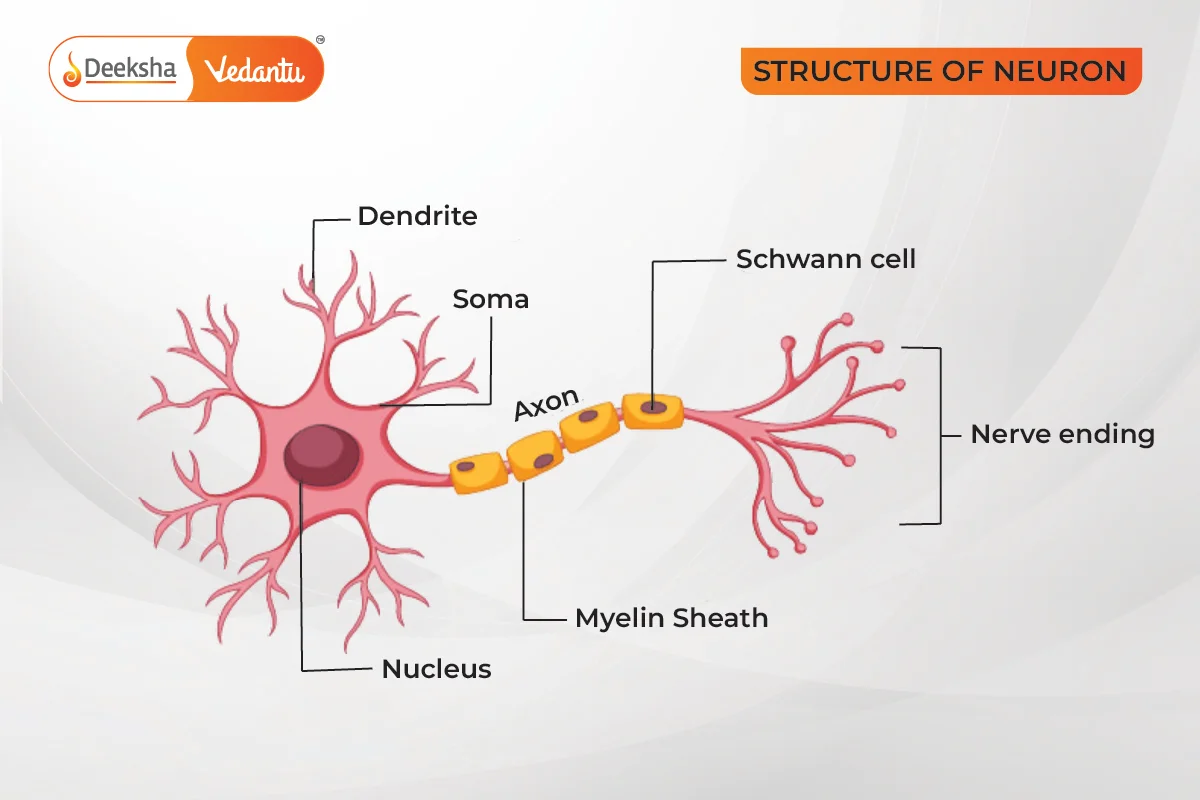Introduction to Neurons
Neurons are the core components of the nervous system, which includes the brain, spinal cord, and peripheral nerves. They are specialized cells responsible for conveying information throughout the body, making them fundamental to all bodily functions, from controlling muscle movements to processing complex thoughts.
Detailed Structure of Neurons

Each neuron consists of three main parts:
- Dendrites: These tree-like extensions at the beginning of a neuron are crucial for receiving information from other nerve cells. They are covered in synapses, the points of contact where neurotransmitters are released, allowing signals to pass from one neuron to another.
- Cell Body (Soma): This part contains the nucleus, which houses the cell’s genetic material, and other essential organelles like mitochondria and the Golgi apparatus. The cell body integrates the information received from the dendrites and generates a response.
- Axon: A long, slender projection that transmits electrical impulses away from the neuron’s cell body toward other neurons or muscles. The axon can vary in length, with some extending a few millimeters and others reaching up to a meter or more in humans.
At the end of the axon, the axon terminals release neurotransmitters to communicate with other neurons through structures called synapses.
Types of Neurons
Neurons are categorized based on their function:
- Sensory Neurons: These neurons respond to various stimuli from the environment, such as light, sound, or touch, and convert these stimuli into electrical impulses that are conveyed to the brain or spinal cord.
- Motor Neurons: They carry commands from the brain and spinal cord to muscles and glands, facilitating movements and secretions.
- Interneurons: Found only in the central nervous system, interneurons connect various neurons within the brain and spinal cord, processing information and making decisions that determine how the body responds to stimuli.
Functioning of Neurons
Neurons communicate through both electrical and chemical means:
- Electrical Synapses: These involve direct, gap-junction-mediated connections between neurons, allowing for rapid transmission of signals. This type of communication is faster and can synchronize the activity of groups of neurons.
- Chemical Synapses: Here, the signal between neurons is carried across a small gap called the synaptic cleft. The presynaptic neuron releases neurotransmitters that cross the synaptic cleft and bind to receptors on the postsynaptic neuron, initiating a new electrical signal.
The complexity of neuronal functions allows for the coordination of sophisticated processes, from reflexes to higher functions like memory and emotion.
Neuronal Plasticity
Neurons exhibit plasticity, meaning they can change their connections and behavior in response to new information, sensory stimulation, development, damage, or dysfunction. This plasticity is the physiological basis for learning and memory.
Conclusion
Neurons are indispensable for all voluntary and involuntary actions within the body, orchestrating everything from heartbeat and breathing to emotions and cognitive functions. Their ability to transmit signals quickly and efficiently across vast networks makes them uniquely capable of supporting complex life processes.
FAQs
Neuronal plasticity allows the brain to adapt to new information, learn from experiences, and recover from injuries, profoundly influencing behavior and cognitive functions.
The three primary types are sensory neurons, which detect environmental stimuli; motor neurons, which control muscle movements; and interneurons, which connect neurons within the brain and spinal cord.
The main parts include dendrites, which receive signals; the cell body, which processes signals; and the axon, which transmits signals to other neurons or muscles.
Neurons communicate via electrical and chemical signals. Electrical signals travel within the neuron, and chemical signals, or neurotransmitters, are released to communicate between neurons at synapses.
Neurons are specialized cells in the nervous system that transmit information throughout the body, essential for all bodily functions, from movement to cognitive processes.











Get Social